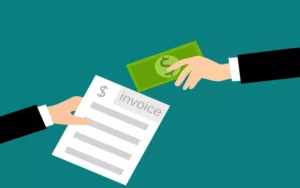What is IFRS 15?
International Financial Reporting Standard 15, or IFRS 15, is a set of rules and standards by the International Accounting Standards Board (IASB) for how companies should record the money they make from contracts with customers. This new standard replaces almost all the old ones that recognize income, such as IAS 18, IAS 11, and IFRIC 13. The main goal of IFRS 15 is to give all types of organizations—public, private, and non-profit—a single set of rules to follow when they report the money they make from customer relationships. It also sets up a way for companies in different countries to report similarly.
IFRS 15 talked about some essential ideas for recording revenue from customer contracts, such as recording revenue when control changes hands, defining what a contract is, identifying the performance obligations within a contract, figuring out when performance obligations have been met, figuring out the transaction prices for each part of a contract; figuring out any variable consideration that applies to performance obligations
When recognizing revenue, companies must also know how these standards will change their systems, methods, and disclosures. They also have to think about how changes might impact internal control over financial reporting processes and the terms of customer contracts.
Synonym
- International Financial Reporting Standard (IFRS) on Revenue from Contracts with Customers
Money made from customer contracts: Compliance with IFRS 15
Companies must only record income when their contractual duties are met, according to IFRS 15. This is called the “transfer of control” model. Because of this, businesses must meet five requirements to identify and report their revenue correctly:
- Identifying Contracts: Businesses must determine what agreements they have with customers by looking to see if there are any that the law can enforce. As part of this, they must determine if goods or services have been exchanged and if either party has paid what they’re owed under the deal.
- Figuring Out Performance Obligations: Once businesses have found contracts with customers, they need to determine what performance obligations are written into them. This includes the things and services a business offers in exchange for money from a customer. It can also include separate performance obligations within a single contract or bundled performance obligations under multiple contracts between different parties.
- Assigning Transaction Price: Once the parties to a contract have agreed on their performance responsibilities, they must assign transaction prices to each other based on their fair values. Suppose a customer gets a discount on goods or services bought together in a single contract. That discount must also be applied correctly to the customer’s performance obligations under the contract.
- Recognizing Revenue: Once transaction prices have been split among the performance obligations spelled out in a contract, entities can only recognize revenue when they meet their performance obligation by handing over control of goods or services to customers. This is known as the “transferring control” criterion. This criterion is met when a party has given away all the significant risks and benefits that came with its performance duty, leaving it with no responsibility for big things that might happen in the future.
- Sharing Revenue Information: To follow IFRS 15’s rules for disclosure, businesses must talk about the types of contracts they have with customers (including how long those contracts are expected to last), how the transaction prices are split up among the different performance obligations, and the current status of meeting those obligations (for example, whether they have been met yet). Companies should also inform investors about any changes they made to the estimates they used to determine transaction prices and other things that affect how much income they should report under IFRS 15.
Even though these factors may seem simple, there are often more problems than people think. For instance, a person or thing has to figure out what power means in different situations, like delivery delays or other factors that make the situation less severe. Also, it might be hard for a business to figure out how much of a particular product or service they need to give before they can start making money from it.
In addition to following the five-step framework for recognizing revenue, businesses must also meet the rules for disclosure to follow IFRS 15.
These include:
- Giving out details about the choices management made about implementing IFRS 15
- Listing the main areas where sales occurred; • breaking down sales into different types of income, like goods sales and service fees;
- They are helping people understand unfinished business (for example, how much of a customer’s total purchase price hasn’t been paid for yet).
IFRS 15 also says that companies must share details about contracts that involve a lot of financing (for example, contracts where the customer pays over a long period instead of paying the total purchase price all at once when the goods or services are delivered) and certain guarantees used in asset purchases, like warranties or service agreements. This is more proof of IFRS 15’s focus on ensuring correct reporting of an organization’s financial performance throughout its activities.
ASC 606 vs. IFRS 15
Both IFRS 15 and ASC 606 are rules for how to recognize income. The Financial Accounting Standards Board (FASB) makes ASC 606, but the International Financial Reporting Standards (IFRS) make IFRS 15. There are some things that the IFRS 15 and ASC 606 standards have in common, but also significant differences.
IFRS 15 takes the place of IFRS 9, IAS 18, and IAS 11, and ASC 606 takes the place of FASB Topic 605, which was about recognizing revenue. Both IFRS 15 and ASC 606 are about how businesses should show the money they make in their financial records. In other words, the rules say when businesses can report profits or losses from selling or trading things or services.
When figuring out how to recognize sales, IFRS 15 is more about control-based models, and ASC 606 is more about performance-based models. IFRS 15 is more concerned with handing over things or services than meeting performance obligations over time. This means that IFRS 15 puts more weight on figuring out when a business has handed over control of goods or services than on meeting all contract performance obligations before recording income. ASC 606, on the other hand, says that companies must meet all of their performance responsibilities under a contract before they can count the money they make from it.
IFRS 15 and ASC 606 are also not the same regarding handling contracts that last more than one year. According to IFRS 15, companies must spread any money they make from these contracts out over all the relevant years based on how much work they do in each one. While ASC 606 lets businesses record their contract-related income simultaneously, some conditions must be met first.
Additionally, IFRS 15 tells us how to decide whether to write off or credit contract costs, but ASC 606 says nothing specific about this. Lastly, IFRS 15 forces companies to share important decisions they made under IFRS 15, but ASC 606 does not.
The Technology to Meet IFRS 15
As IFRS 15 becomes more widely used worldwide, software that meets the standard’s requirements is becoming increasingly critical for businesses. Businesses can ensure their financial records are correct and up-to-date by following IFRS 15. Entities can meet this requirement, and software solutions that automate income recognition make it easier for businesses to stay in line with the standard.
Software made to help businesses follow IFRS 15 takes care of all parts of accounting, from gathering data to analyzing it and sending out reports. It also gives companies information about complicated transactions that helps them better understand their finances and give correct reports on their performance. This software can handle present and future rules, which helps businesses stay in line even when rules are changed or added.
Revenue identification software can be used on-premises or in the cloud, among other places. Companies can access their data anywhere at any time with cloud software, which is a great way to keep up with new rules. Cloud software gives you access to data in real time and speeds up compliance processes by letting you make changes quickly.
When companies choose software to ensure they follow IFRS 15, they should look for solutions that offer a lot of help, like training sessions and technical support staff who can answer any questions about the software or the rules set by IFRS. Another essential feature is automation, which helps reduce mistakes when doing things by hand, like notebook entries or reconciliations. Last but not least, scalability is essential. Software should be able to grow with a company’s needs without needing significant investments in new equipment or resources.
Many businesses use software made to be compliant with IFRS 15 and ASC 606 because it helps them keep their financial records correct and consistent across multiple jurisdictions while adapting to changes in law over time. It’s essential to have accurate data when following the law, which is why software solutions are needed to keep up with constantly changing standards like those set by IFRS 15.
IFRS 15 has the most effect on businesses.
Companies of all kinds must follow the same rules set out in IFRS 15 when they record revenue from customer contracts. This standard impacts many different business types, but companies that offer subscriptions or licenses rely more on customer contracts than other businesses do.
This new standard will have the most significant effects on businesses that deal with software and technology, media and entertainment, transportation, and professional services. Signing contracts for services like cloud hosting, subscription services, or software support agreements is typically how users of software-as-a-service (SaaS) businesses receive payment. To offer streaming services or material you pay for, media and entertainment companies often rely on customer contracts. Transportation companies let customers sign contracts for overnight delivery or freight transfer services. Professional services firms may have clients sign contracts for particular projects, like consulting jobs and other tasks that need to be paid for when they’re done.
Businesses that follow IFRS 15 will benefit in many ways. For example, a few benefits are more accurate financial data, more open financial reporting that can increase investor confidence, and overall more accountable management that builds trust among all stakeholders.















































